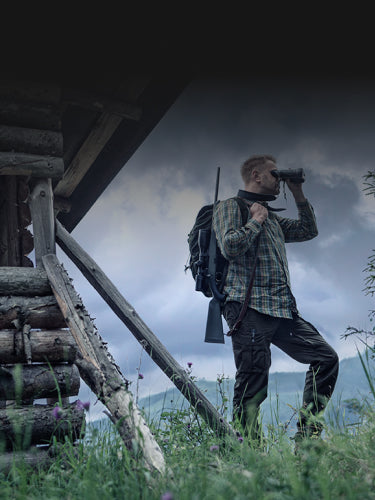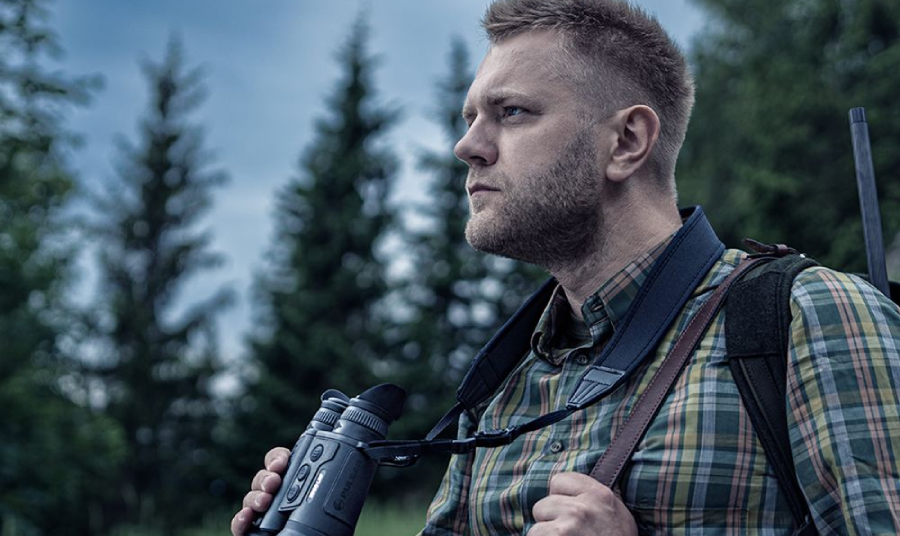Hunting is a timeless pursuit that has been refined over generations, and now the primal nature of the sport has melded with modern technology. One of the most critical skills a hunter can possess is the ability to spot prey from a distance, and in this endeavor, glassing skills reign supreme. Whether you're stalking game in the rugged mountains or across expansive plains, using the terrain to your advantage and employing the right equipment can make all the difference in your hunting success.
Ed Beattie, a seasoned hunter and now the general manager of Cabela's, once emphasized the importance of spending ample time behind your optics. When you're positioned atop a tall hill or mountainside, you have a unique vantage point that allows you to scan the surrounding landscape for signs of your quarry. However, patience is the key to successful spotting, just as it is in hunting overall.
Terrain Advantage
Imagine being perched on an elevated spot with an unobstructed view of the terrain below. If you don't spot any animals within the first two or three hours, it's tempting to move on to another location. However, this impatience can be a hunter's downfall. The terrain advantage you have should not be squandered. Instead, take your time and observe diligently.
A good pair of binoculars with high magnification can extend your visual range far beyond what you could see from a ground blind. These optics provide you with the opportunity to survey the landscape in detail, increasing your chances of spotting elusive prey.
Glassing from an Elevation
While glassing from an elevated position offers numerous advantages, it's important to remember that the animals you're hunting are not oblivious to their surroundings. Many prey animals possess highly developed survival instincts. Deer, for instance, are naturally wary creatures, always on the lookout for potential threats.
To avoid detection, hunters should maintain a low profile and avoid exposing themselves over the top of a ridge, mountain, or hill. This is known as "skylining" and should be avoided at all costs. Military personnel are told to avoid silhouetting themselves against the sky for a similar reason. Just as vigilant enemy snipers watch for silhouettes in combat, wildlife is constantly scanning for unusual shapes on the horizon.
The Merger LRF XP50
The downside of daytime binoculars is their inadequacy in low light environments. However, with thermal binoculars like the Merger LRF XP50, you have the power of long range detection in both daylight or nighttime. With a detection range of 1,968 yards and a high-definition 640x480 <25mK NETD thermal sensor, the Merger surpasses daytime binoculars in both daytime and nighttime observation. Its impressive 10-hour battery life ensures extended periods of use, perfect for those who require prolonged surveillance in the field.
What sets thermal binoculars like the Merger apart is their ability to detect heat signatures, making it possible to spot animals regardless of camouflage or time of day. This technology is particularly useful for hunters who want to track game during low-light conditions.
The Merger LRF XP50's 2.5x – 20x variable magnification makes it a versatile tool for long-range observation. However, to maximize the quality of your observations, it's advisable to use a stable mount or tripod. This steadiness reduces image shake, ensuring that you capture higher-quality images.
Grid-Based Observation
When using thermal binoculars for observation, it's essential to have a systematic method. Consider the approach taken by the famous archaeologist Howard Carter when he discovered Tutankhamun's tomb. Carter divided the desert into grids and methodically searched each one until he found the tomb.
You can apply a similar approach to hunting by mentally dividing the landscape into grids and moving your binoculars slowly from left to right and up and down. This methodical approach ensures that you cover the entire area and increases your chances of spotting wildlife giving off infrared heat in the distance.
In conclusion, hunting and observing the terrain with thermal binoculars is a skill that combines patience, precision, and the right equipment. Leveraging your terrain advantage, employing high-quality optics like the Merger LRF XP50, and using systematic grid-based observation techniques can significantly enhance your hunting success. Remember that while technology can provide an advantage, it's your knowledge, skill, and respect for the natural world that make you a successful and ethical hunter.
Frequently Asked Questions
1. How can glassing skills improve hunting success?
Glassing skills can help hunters spot prey from a distance, increasing the chances of a successful hunt.
2. What should hunters consider when glassing from an elevated position?
Hunters should maintain a low profile to avoid detection by wildlife and prevent 'skylining' themselves against the horizon.
3. What advantages do thermal binoculars offer over daytime binoculars?
Thermal binoculars like the Merger LRF XP50 provide long-range detection in both daytime and nighttime, with the ability to detect heat signatures.
4. How can patience play a key role in successful spotting?
Patience allows hunters to thoroughly observe the landscape and increase their chances of spotting elusive prey.
5. What features make the Merger LRF XP50 stand out as a thermal binocular?
The Merger LRF XP50 has a detection range of 1,968 yards, a high-definition thermal sensor, and a 10-hour battery life for extended use.




